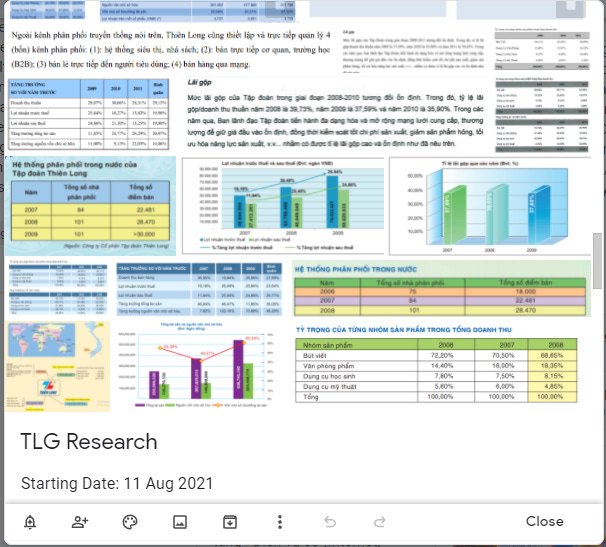Practice Analyzing & Investing Stocks With Investment Journal
Keeping an investment journal helps you: 1) clarify your thoughts, 2) identify risks, and 3) communicate research priorities.
By chance, I read a great share about developing the skill of writing an investment diary. From personal experience, writing helps clarify and refine my thoughts, fostering personal growth. Therefore, in investing, if we can apply and practice writing skills—specifically through an investment diary—it will be very beneficial for our investment journey in the long run.
Keeping a journal is a undervalued skill; if practiced, it can make you a better investor.
Journaling can help minimize mistakes and assist you in making decisions under uncertain conditions.
When considering buying a stock, you should write an entry outlining all the reasons for purchasing the stock, such as undervaluation, favorable risk/reward ratio, etc.
At the same time, writing a pre-mortem (reviewing the details of why the investment might fail BEFORE actually investing) allows you to envision many years into the future and document all the potential downsides and risks of losing capital.
This can uncover questions that can be answered by conducting further research.
This is very useful as it can redirect your focus towards making valuable use of your research time.
In summary: Writing a journal 1) clarifies thoughts, 2) identifies risks, and 3) communicates research priorities.
Sometimes this process leads to NOT buying stocks. Or if you do buy it, you have a report on the reasons why you bought it.
All of the above are immediate benefits, but keeping an investment journal also pays dividends over time by allowing you to go back and review your decisions and thought processes. Without logging, these insights and potential knowledge can be lost.
I have practiced the analysis and recording of my investment ideas in this direction. I use Google Keep which can sync across multiple devices (Personal computers, iPhone, iPad), so I can read and write notes whenever I have free time, research stocks, read interesting articles, or save my thoughts, review and further develop my analysis skill before making investment decisions.
The image above is a section I extracted from my investment diary regarding the shares of Thien Long Group Corporation (TLG). My research approach is as follows:
+ Download and read all the annual reports of the company (in the case of TLG, from 2009 to 2020 - a total of 12 reports).
+ Record all the questions during the reading process, such as the examples below, for the three most recent annual reports (2018-2020):
+ Summarize personal impressions and evaluations of the company, business model, risks, potential, and opportunities if investing, etc.:
+ Store articles, analyses, and sell-side reports from securities companies for reference and review when necessary:
+ Regularly review and answer any outstanding questions, further develop issues that need clarification, and summarize the investment idea in three brief points (Explain why to invest in three clear, concise, and honest reasons for yourself, or if you are helping parents or friends invest in that stock, how you can explain it in the most understandable and transparent way to someone who is not an expert; similarly, explain your reasons for not investing).
+ Repeat the aforementioned steps (without any stopping points), as I believe it is a continuous journey of learning, expanding, and developing, and I also do not limit the time for each idea or decision.
I feel that this method helps me: (1) Systematize, increase discipline towards myself; (2) Be serious in evaluating whether or not to invest; (3) Provide long-term benefits in developing skills for analyzing and assessing companies and stocks, compared to the previous casual and unstructured thinking.
I hope this little sharing can be helpful to you, and if it is useful, I encourage you try to start your investment journal from today.






